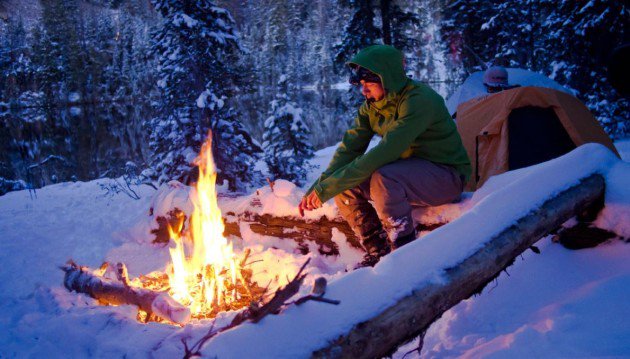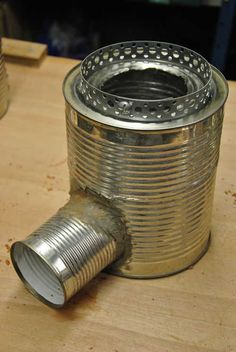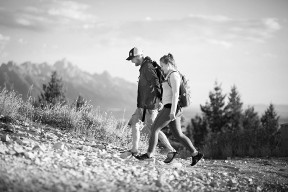MESSING ABOUT IN THE MAINE WOODS: A real problem with someone in my life – Past Me

 by Ron Maxwell
by Ron Maxwell
I have a real problem with someone in my life: Past Me. He is an embarrassment and a nuisance and I wish I knew how to handle him. He always fools around and leaves me to do the work. Past Me even thought it a great idea to go camping last February break. I made ready all the food, double checked that I and my two teenage boys were packed. This camping trip even ran afoul of Herself as my wife worried about the temperature. I eventually had to gracefully accept her input and postpone the trip.
This week during April break the boys reminded me of Past Me’s promise and cowardice. I smoothed things over by letting them pick a day to spend in the woods. Once again I was planning and looking after Past Me’s task. Since he had already packed, I just grabbed the bag and the boys and I set out on the day they chose. Our early morning departure looked good, and it looked like the weather forecast would be right about today being the only day of partial sun and not rain this entire week. The only downside to the plan would be the outside chores neglected in our absence. Past Me had promised Herself a day of outside cleanup.
The good day turned bad in several ways. As we hiked to camp, an azure sky turned leaden. Gusting winds then thwarted most attempts at fire. Fleas, thousands of flocking fleas, made my sleeping on the ground not an option. Poor planning left us extra time which turned into a cold, windy walk. Food, started in the kitchen, failed in the field. An impending, frigid, sleepless night loomed as we huddled by our finally started fire.
Later, around that same fire, I realized my focus on the negatives was wrong. Our day contained all the fun parts of camping. Full packs and all, we had hiked and enjoyed it. We had tamed the wilderness to set up camp. We had overcome failure of the lighters with an emergency kit, my sleep system problem with an extra hammock, and our poor food choices with some good nature. We had wandered packless through the nearly springtime forest, played in streams and made pine mint tea (mint leaves we grow at home are always in my mess kit and the pine needles we picked made a welcome addition.) A safe, basketball sized fire completed our camp, with its small size made effective by adding flat rock reflectors and our microclimate tarp. We had also talked and ate and sat ourselves to that comfortable peaceful silence I love about family.
So, I suggested to the boys we could go home. This could be a new thing: theoretical camping. Camping joy without suffering the eternity of cold darkness until morning. We were only ten miles away, had experienced the best parts of camping and we could work tomorrow on the projects that were needed around the house. We could also, I added, get candy bars on the way home. Neither of them needed convincing past that, so we packed up camp. When we got home I had candy bars for everyone and all my wife said in the way of, “I told you so,” was “So you couldn’t stay away?” The smell of campfire hung about me as I nestled into the couch. I alternated between finishing a Snickers and dozing through a famous actor’s terrible British accent (he was singing some drivel about chimney sweeps, I think…) I also slept great that night.
Next day, as I was taking advantage of beautiful weather to work in the yard, it occurred to me that Past Me had finally done something right. He had shown discretion and coined a new hobby of theoretical camping, camping without the missing home part. So some things can change. But then it dawned on me that some things never do. He had messed about in the woods while I was stuck doing all the hard work at home.



 Messing About in the Maine Woods
Messing About in the Maine Woods